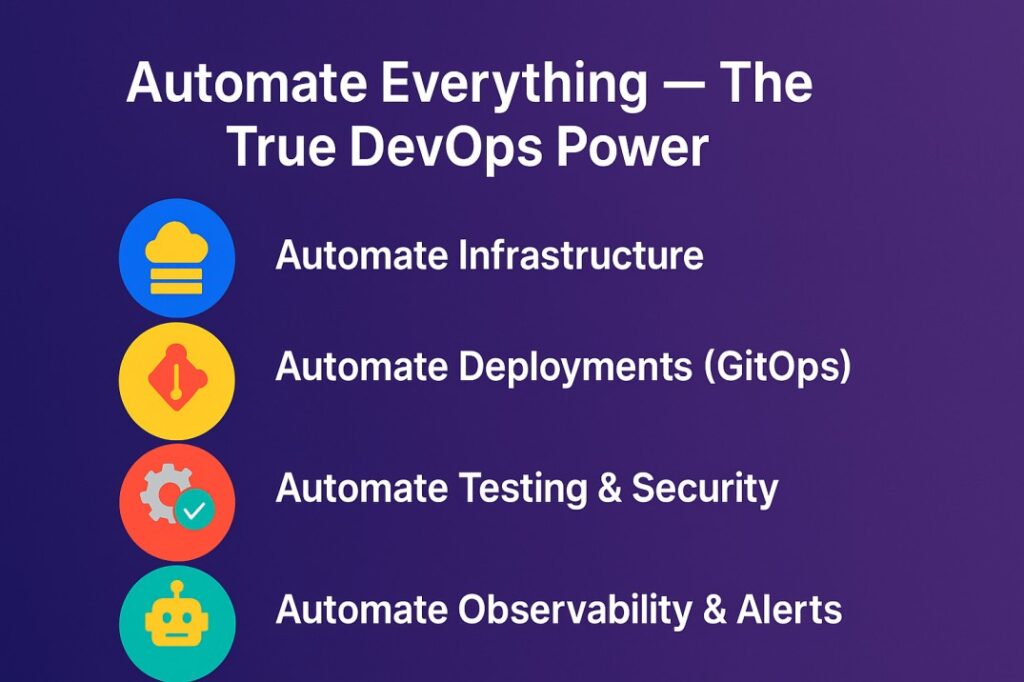
Automation is the backbone of modern DevOps.
It’s what converts human processes into reliable, repeatable, and scalable systems – from code commit to production monitoring.
1. Automate Infrastructure
- Use Terraform, Pulumi, or Crossplane for declarative provisioning.
- Store infra as code in Git for auditability and rollback.
- Example: terraform apply -auto-approve
- Integrate secrets via Vault or Sealed Secrets for security.
2. Automate Deployments (GitOps)
- Adopt ArgoCD or FluxCD for continuous delivery.
- Every environment (dev → prod) is controlled through Git commits.
- Rollbacks = git revert.
- Example flow:
git push → ArgoCD sync → cluster deploy → metrics verify
3. Automate Testing & Security
- Integrate testing early: unit → integration → chaos → security.
- Use Trivy, Snyk, and OPA Gatekeeper in pipelines.
- Shift-left security with policy enforcement in CI/CD.
- Example YAML:
– name: Run Trivy Scan
run: trivy image myapp:latest
4. Automate Observability & Alerts
- Collect logs, metrics, and traces with OpenTelemetry.
- Define PrometheusRule CRDs for proactive alerts.
- Example: expr: rate(container_cpu_usage_seconds_total[5m]) > 0.8
- Automate alert routing to Slack via Alertmanager webhooks.
5. Automate Remediation (AIOps)
- Integrate KubeHA AI to detect, diagnose, and auto-remediate incidents.
- Auto-run commands like: kubectl rollout restart deployment checkout-service -n prod
- AI correlates failures and recommends fixes, reducing MTTR drastically.
Bottom Line:
Automation isn’t about removing humans – it’s about amplifying them.
From infra to observability, the true DevOps power lies in automating the entire lifecycle – and KubeHA AI makes that future real.

Experience KubeHA today: www.KubeHA.com
KubeHA’s introduction, 